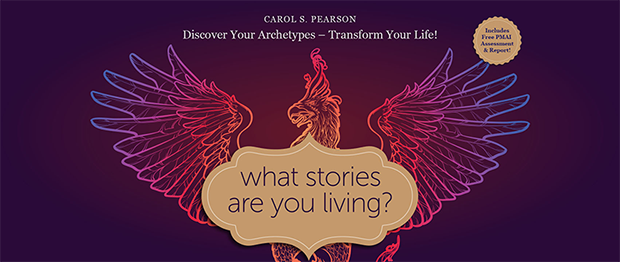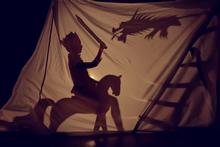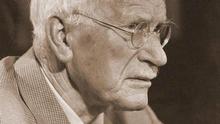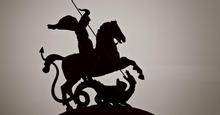Reviews and Excerpts
What Stories Are You Living?
Quotes from the reviewers:
"In this book, Pearson's lifetime devotion to illuminating twelve archetypes that flow in and out of the hero's journey is provocatively and vividly in evidence. She fleshes out the ineffable and mysterious in ways that every reader can relate to. Her theme throughout is that consciousness makes the difference: for the individual, the culture, indeed the planet itself. In the end, Pearson's work is in line with the ancient ideal that self-knowledge is key to living a better life. Her efforts throughout serve this higher calling."
Angelo Spoto, MA, Licensed Mental Health Counselor and the author of Jung’s Typology in Perspective
“Dr. Pearson’s book will introduce the rich archetypal journey of Jungian individuation to the novice and deepen the competency of the advanced reader to use Jungian archetypes for awareness and evolution towards one’s highest self.”
Naomi Quenk, PhD, clinical psychologist, MBTI® expert and researcher, and author of Beside Ourselves: Our Hidden Personality in Everyday Life and In the Grip: Our Hidden Personality
“Pearson’s wise book helps each reader address the question, ‘What is the story of me?’ Recognizing and telling one’s life story is developing the narrative intelligence (NQ) that enriches one’s capacity to recognize story patterns in ourselves and in the world. Suspend judgment and take the journey into revealing your own archetypes.”
Susan R. Komives, EdD, author of 15 books including Leadership for a Better World
“As Prometheus brought the messages of the gods to human ears, so too has Dr. Pearson succeeded in helping the interested layperson understand the fascinating world of these archetypes and their influence in our lives in works that stand the test of time. What Stories Are You Living? updates archetypal theory in the context of contemporary research and human aspirations.”
-Michael Conforti, PhD, Jungian Analyst, Founder and Director of the Assisi Institute: The International Center for the Study of Archetypal Patterns
Quotes from the readers:
"When it comes to breathing life into the powerful and often misunderstood theories of Carl Jung, none has done it better or longer than Carol Pearson. She does it again in What Stories Are You Living, her latest and best effort on the ideas that make Jung as viable now as ever. She starts with the ideas of archetypes-- the dynamic structures that inform our major thinking patterns—and then creates an orderly, fun, story and example-rich tapestry of ideas so we can live our lives with narrative intelligence.
This book is so useful for coaches. Coaches take on the task of helping their clients create a more expansive story so they can live into their futures with imagination, and more choices for success at every level of work and life. This is the narrative intelligence that Pearson so thoroughly and beautifully covers—it is ordered for the analytical side of us and aesthetically vibrant with its rich language, multi-layered textures of thoughts and themes, and practical.
As our guide to show us how deeply storied our lives are, Pearson helps the reader become aware of the upsides and the downsides of the stories we adopt as our own. She helps us go from not fully seeing our plotlines to becoming more self-authoring, avoiding the negative possibilities—readers will be forewarned with her “cautionary tales”—and living more consciously into the upsides and the promise of the hero, or the sage, or the idealist or the seeker, or any of the twelve stories/archetypes she brings alive."
-John Schuster, Author of Answering Your Call, and The Power of Your Past, Faculty at The Hudson Institute of Coaching and Columbia University's Coach Certification Program
"Anyone who takes the PMAI assessment and uses Pearson’s book as a manual will discover astonishing and imminently practical truths emerging from their utilization, underpinned by a rich combination of mystical sources and realistic analogies. Pearson has made education in the realm of self-discovery her own chosen path, perhaps herself embodying a bit of all the archetypes she has constructed. This volume of her work is a must-read for anyone willing to take that crucial and rewarding inward journey with her." Read more…
-Barbara Bamberger, on BookReporter
"Though literary, Ms. Pearson’s writing is comforting and clear. She seems to hold your hand as you venture deep behind the choices you make, draped in the symbology womankind, mankind or any “genderkind” can’t escape.
Far more than a book, this is a journey of self-discovery. Prepare to be altered in a good way by delving into it." Read more…
-Melanie Chartoff
"I highly recommend this book for teachers, psychologists and anyone seeking to increase their awareness of both strengths and ways to improve one’s chances of living their best stories." Read more…
-Kathleen Pooler
"One of the most interesting things about What Stories Are You Living, is that a reader can pick it up, begin reading anywhere their eyes land, and be instantly taken in, be it by one of the many stories adapted from the classics generously peppered throughout, or by some of the more clinical, but no less enthralling, anecdotes delivered by Dr. Pearson." Read more…
-Tami Richards
"What I love most about this approach — whether you’re using it for storytelling or for understanding yourself better — is that the PMAI test reminds you that you’re all these things, all 12 archetypes. It’s just that at some points in your life, you’re more like one type than another. And you can use this knowledge of what’s happening in your life right now to figure out what to do next. And you can leverage that to create a sense of purpose that impacts the world. Much like the mythical hero’s journey as envisioned by Joseph Campbell, Pearson envisions these personality types as vital to our own personal hero’s journey in life. It’s a nice mix." Read more…
-Michele Chiappetta
"What really sets this work apart is the pairing of archetypes into complementary yin/yang pairs. I’ve always seen the shadow side as a negative, something shameful and to be avoided. Carol shows you how to use this as a tool to turn your shadow into an ally, showing how to call on the qualities of the opposite pair, as well as ways you can re-enliven this sleeping part of yourself when needed." Read more…
-AnnaMariah Nau
"This book is a fabulous guide! It is quite detailed and would be an excellent resource for professionals helping clients to better understand their motivations and challenges. The information and resource materials are most valuable when using the assessment results to formulate questions needing clarification. But it’s also a great guide to self discovery and improvement. I found so much value in this book!" Read More…
-Sharon Duerst
From What Stories Are You Living?
Humans are storytelling creatures, yet not until recently have we understood how the stories we hear and tell make sense of and shape the world around us. Even now, most of us are a species a bit like fish, who live in water but take it for granted. To a fish, water is just reality. We humans swim in a sea of stories. At best, our stories can help us grasp on a deeper level what is going on within us and around us. But stories can do this for us only if we recognize the power of narratives and come to understand how they serve both our own good and that of the world. The truth is that if we are oblivious to the story patterns we are living, they then live us, without our having the ability to shape the forms they take. This book offers you the chance to become conscious enough of your stories to influence their expressions.
If you were drawn to the question posed in this book’s title, you likely want to know how living stories well can help you realize the life you desire. You also might want to know how much leverage you have to shift the stories you are now living. This book can help you with both of those aims. You probably have heard the popular adage, “Change your story, change your life.” Clearly, there is some truth to this notion, but it is a bit more complex than that. Sometimes you need to embrace your story; sometimes express it more skillfully; and sometimes, yes, you may need to change it. In truth, we all are living more than one story. If we were not, we would be one-dimensional, like a character in a mass market popular film, comic book, or novel.
The narratives we live shift through life and vary in their functions. A few can clarify our purpose, fuel our passion, and provide direction to our efforts. Other narratives, although they do not feel so much like us and may not offer as much life satisfaction, can expand our horizons and help us learn to relate well to a wider variety of people or to deal with new and even unexpected situations.
In literature and film, characters do not initially know what story they are living until it is revealed by what they do in response to the challenges they face. Think of the classic tale, Beowulf, who slayed the monster, Grendel, terrorizing his village.
We can say that Beowulf did not truly know he was a Warrior until Grendel appeared and the plotline called for one, which he became. You can look at your life in the same way. You can learn to identify the archetypal narratives—the universal human dramas expressed through time and culture—that you are living by paying attention to how you think, how you react to life’s challenges, and most of all, what you then do.
You will be learning in this book about twelve archetypal stories with a central archetypal character that have contributed to the success of the human species as well as to each of us—individuals desiring to live fulfilling and productive lives. You can think of the twelve stories as promoting human abilities that are a bit like superpowers, in the sense that they energize important and positive human traits that you can express in your unique way.






















_thumb.png)
_thumb.png)


